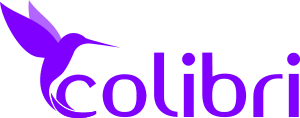
Essential Guide to Internal Linking for WordPress SEO Optimization
WordPress is widely recognized for its SEO-friendly features, allowing developers to create dynamic and competitive websites. A key aspect of this SEO strategy is the effective use of internal links. These links play a vital role across the internet, with search engines like Google and Bing relying on them to navigate and rank web content.
Understanding Internal Links
An internal link connects one page of your website to another, earning its designation as “internal.” Almost every website incorporates internal linking in some capacity. Take Wikipedia, for instance; each entry often contains numerous internal links, helping readers quickly find related information.
By linking to your contact page from a landing page, you streamline the process for users, making it easier for them to reach out without navigating through the entire site.
The Importance of Internal Links
Internal links serve multiple purposes, primarily enhancing both readability and search engine optimization. To grasp their significance, it’s essential to understand how search engines crawl websites. They deploy robots, often referred to as spiders, to scan your site. This process involves fetching and processing all available data, after which the search engine indexes your site for visibility.
Effective internal linking aids these crawlers in navigating your site efficiently. By strategically placing internal links within your content, you help these automated systems index your pages and rank them according to relevance. This practice not only improves your site’s visibility but also encourages better navigation for users.
Internal Links vs. Backlinks
Both internal links and backlinks are crucial for improving your website’s search rankings, yet they serve different purposes. Internal links direct users to other pages within your site, while backlinks point from external websites back to yours. While internal links enhance user experience and site navigation, backlinks indicate the popularity and credibility of your content, functioning as votes of confidence from other sites.
Defining Anchor Text
Anchor text is the clickable text that comprises a hyperlink. It is typically underlined and styled in a different color to stand out. When creating an internal link, it’s vital to choose anchor text that accurately reflects the linked content. For instance, if you’re writing about launching an online store and want to link to an article on selecting the best store builder, you might phrase it like this:
“Starting a successful online store depends on the store builder you choose. Explore our article on selecting the best online store builder.”
It’s crucial to optimize anchor text for relevance, avoiding vague phrases like “click here” or “read more,” as these offer no context to search engine crawlers.
Avoiding Common Internal Linking Mistakes
While adding internal links might seem straightforward, there are several pitfalls to avoid:
- Link Stuffing: This black-hat SEO tactic involves overloading a page with irrelevant links, which can lead to penalties from search engines. Always ensure links are relevant and meaningful.
- Linking to Irrelevant Pages: Choose pages carefully. For example, linking a payroll software landing page to an unrelated service page can distract visitors and lead them away from your site.
- Using No-Follow Attributes: Internal links should have the “follow” attribute to ensure crawlers follow them. Links with the “rel=nofollow” attribute can undermine their effectiveness.
How to Add Internal Links in WordPress
Integrating internal links in WordPress is a simple three-step process:
- Highlight the Anchor Text: Use your mouse to select the text you want to link.
- Click the Link Icon: In the WordPress editor toolbar, click the chain link icon to open the linking options.
- Paste the Internal Link URL: Enter the URL of the page you want to link to and decide if you want the link to open in a new tab.
For an even more efficient process, consider using WordPress plugins like Link Whisper or Interlinks Manager to help manage your internal linking strategy.
Utilizing internal links effectively is an essential component of optimizing your website’s SEO and improving user navigation. However, it’s just one aspect of a broader strategy for building a successful online presence. The choice of WordPress hosting, among other factors, will significantly influence your site’s performance and success.

